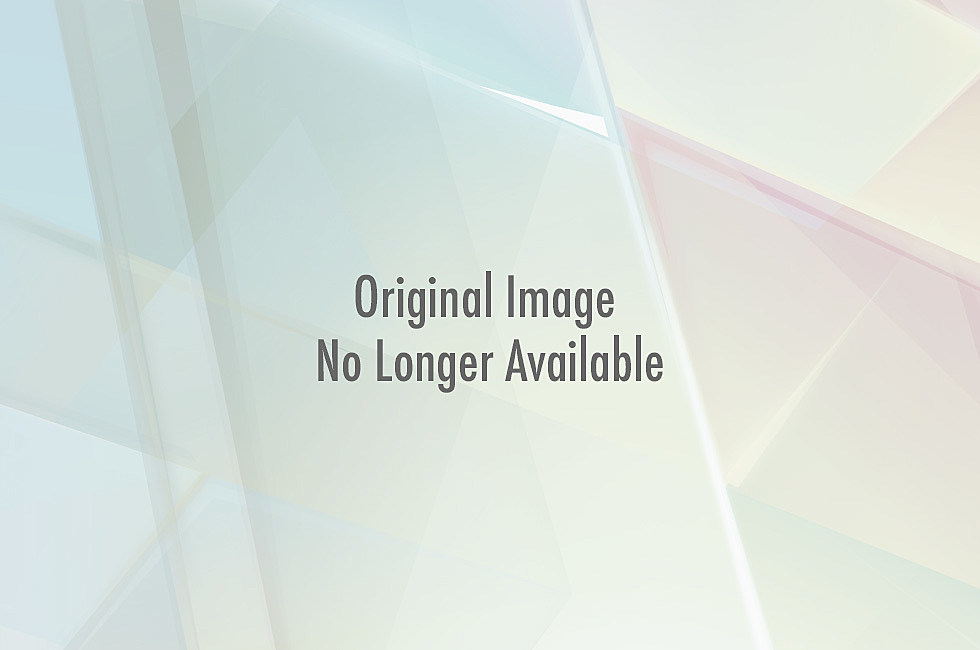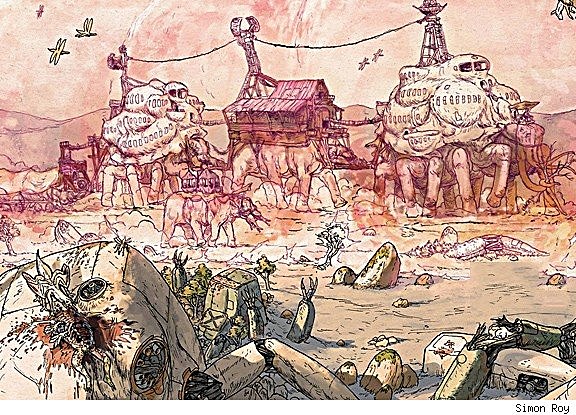
‘Prophet': The Barbarian Space Opera You Should Already Be Reading

One of my favorite genres in comics is the space opera. There have obviously been great space operas in television, books, and movies, but to me there's something about the medium of comic books that makes it especially effective for the genre, particularly when in the hands of Europeans, or at least European-style artists. Moebius, Enki Bilal, Alejandro Jodorowsky and Juan Gimenez, Phillipe Druillet and a handful of others set to work defining the genre and re-defining the medium in the 1970s, and there's been little done in American comics to rival the weird, wild, and ethereal worlds they invented. Until Prophet came along, clubbed them over the head, and ate them.Under the guidance of King City cartoonist Brandon Graham, Prophet has become the premiere science fiction experience in comics. With regular artist Simon Roy of Jan's Atomic Heart, fellow Meathaus alum Farel Dalrymple, and Greek artist Giannis Milonogiannis, Graham has re-engineered Prophet into a book that recalls the very best in European space opera, and what may be the most fascinating new comicbook to come along in years.

Yes, that's right. The most fascinating comicbook to come along - in years - is Prophet. If you heard that ten years ago, you'd laugh so hard you'd piss yourself.
Way back back in 1992, Prophet made his first appearance in Youngblood #2 as a purple-suited, headguard-wearing supersoldier with comically large guns, hair that looked like he'd been ousted from Cinderella, and shoulder pads even bigger than Paula Poundstone's. So of course he was an instant hit. (Too many references for one sentence? Cinderella was an awful 80s glam metal band, Paula Poundstone an awful comedienne, I believe we're all caught up.) A Rob Liefeld creation, most of the early Prophet comics were illustrated by Stephen Platt, a rising superstar, and the character was quickly swept along in fervor that typified most early Image, popular despite its flaws. It didn't last too long, though. The publication schedule was far from rock-solid, and when Liefeld left Image and formed Extreme Studios, interest in Prophet took a dip. The second volume lasted up until issue 20. When it disappeared, it was natural to assume that it would never return. So if you're unfamiliar with the character's not quite long and storied history, you're not alone.

Gaudy, misguided, and derivative as the character was, it's actually not an awful concept, and the origin ain't half-bad. (I only write backhanded compliments.) Destitute and homeless, in 1937 Jonathan Taylor Prophet volunteered for the medical experiments of Dr. Wells, a time-traveling scientist who modified and enhanced John, turning him into a living weapon in service of a villain named (coincidentally, I'm sure) Phillip Omen. When Dr. Wells turned good guy (it happens) he re-programmed John to fight against evil by imbuing in him a belief that he was fighting a type of religious war, hid him by time-travelling him to different eras, and placed him in cryogenic storage, where he remained until eventually discovered by the Youngblood team.
Of course, none of that actually needs to be known to read the relaunch. Picking up at issue 21, right where Extreme left off, in the current run of Prophet the original concept is adapted, expanded, and transformed into something very familiar and remarkably different. Set approximately ten thousand years in the future, the human race is all but extinct. Years after a war that spanned galaxies, Earth is overrun by xenomorphs and parasites. After what's perhaps generations of silence, an Earth Empire signal awakes dozens, maybe hundreds of cryo-sleeping John Prophet clones embedded in alien worlds all throughout the universe. And so far, it's been wild, weird, epic, and nothing less than brilliant.

Combining the violence and savagery of John Buscema's Conan comics of the 1970s (Graham's primary influence on the book) with the odd beauty of French sci-fi masters like Moebius and Enki Bilal, Prophet takes readers on a journey that no other comic does: to other worlds that actually seem like other worlds. As many alien planets we come across in comics, a whole lot of them seem a lot like Earth. In Prophet, Earth is so infected and overrun with four-jawed mutants, it doesn't even look like Earth, and alien worlds are so freaky and convincing, you might actually throw up in your mouth a little bit. The level of ingenuity put into the world-building is unreal, and it only takes moments to be swept along into whatever schizophrenic environment each issue is set in. Even at the frantic pace it's setting, that ingenuity has yet to lag.
The density of great ideas is probably equal to anything by the best imagineers in the medium. The first story arc alone - which takes place on an Earth taken over by parasites and alien species - is pregnant with bizarre invention, featuring a jell city populated by a smell-based caste society of gloopy insectoids; the "dolmantle" - a living shield/weapon/environmental adapter made out of slime; a "human centipede" of giant insects serving as a living factory; and a race of sentient crystal-beings engaging in forced child labor. Uncluttered by dialogue and unnecessary captions, there's an eerie silence that amplifies the strangeness of reading it. The third-person narrative voice is sparse, almost anthropological. And no matter which of the four artists is drawing these feverish nature films, the art is always immaculate.

Each illustrator has something entirely different to bring to the comic, and as each story takes place in a remarkably different setting, the transition from one illustrator to another is never jarring. That may be due in part to the very organic manner in which the book is written and drawn. There's constant back-and-forth between Graham and the artists (unless Graham is writing and drawing it himself, like in the poetic issue 26), with much of the writing being done on layouts. Each artist's personality really comes through the artwork, and whether it's Simon Roy's chitin and viscera, Farel Dalrymple's mix of classic Marvel illustration and indie cartooning, Milonogiannis' speed-lined action panels, or Graham's wispy Otomo-Moebius fantasies, it all works to tell the same story. Thank the Great Eye, it looks like that story is going to be a big one.
The concept is so rich, there are potentially hundreds of stories for the Prophet team to tell. Each "Brother John" cocooned in his "hyber pod" is the hulking, hungry seed for a great story, every environs a new playground that Graham and company can explore. But the larger story is just beginning to come into focus, of the war that consumed the universe and felled the Earth Empire, and why the white-haired Old Man Prophet doesn't give a damn. Originally planned for six issues a year, after the rapid success of the first issue, Prophet was bumped up to twelve, with all four artists planning to contribute. The first trade collection, Remission, will collect issues 21-26, and is scheduled to emerge the week of August 22nd. But by then this asphyxiating drought in the Midwest will have destroyed most of our food crop and reduced us all to hunting and killing just to maintain our meager survival. So maybe you should grab some issues of Prophet and pick up a few survival ti--holy s***, is that Diehard!?

More From ComicsAlliance









